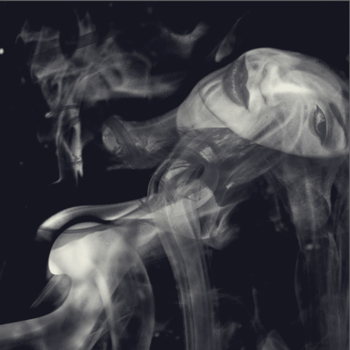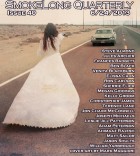I loved the themes of loss, memory, and secrecy in this piece. Were these themes intertwined from the get-go or did one of these three speak to you more than the others?
Thank you, Curtis. A lot of my stories begin with an image, and in this case, I imagined a girl sitting on concrete steps, cradling a box. I wrote my way through that image into what became the story. The sense of loss launched the themes of memory and secrecy. I would say it is rooted in loss.
The box with its wax seal is such a great little item. Tell me how you viewed the box and its oft-broken seal.
I had a wax sealing kit as a child, and I loved it. I wrote long letters to people just to press the stamp into the wax on the back of the envelope. As I was writing this story, I pictured a shoebox, though in retrospect, a cigar box would be a much better candidate—those were the boxes I loved and collected as a child. I imagined her shoebox having all those little seals along the lid, some overlapping.
The box is the narrator’s most prized possession, yet she doesn’t really protest when the mother opens and takes things from it. How does this sense of sharing play into the story’s larger themes?
In an earlier draft, there was much more confrontation but I found myself coming back to the idea that this girl is participating in the stepmother’s strange ritual. I see her as observing, trying to understand this woman to whom she is now completely tethered. In the larger context, they are thrown together by the father’s absence, and this little ritual is the one private thing they share. I am also really fascinated by the lives of the people who fish for a living
here. They are gone for long stretches, and they and their families must feel a lot of longing and sadness during those times.
Even though no specific locale is mentioned, this piece had a strong sense of place. Where did you envision it taking place?
It is set here in Bellingham, Washington. There’s something very haunting about this place—the stark white driftwood, the rocky beaches, the cold wind, the rain. It’s hard not to incorporate this place into everything I write.
Can you pinpoint this piece’s origin to a single image or incident? If so, what was it?
From early childhood until college, I always kept a box of little keepsakes. It’s not a unique impulse—I’m sure lots of kids have little treasure boxes. But it was always a very private collection for me. One day, a girl who lived down the street went through it and talked me into giving her the little mini marbles in it. Because they weren’t of
particular sentimental value, just little marbles from the craft shop downtown, I let her have them. And then, of course, I was really upset that I had done so. I remember somehow trying to finagle a way into her bedroom to take them back—to no avail. I remember feeling really helpless and then realizing that I had allowed her to take them and
anxiously struggling with that for weeks, months.
What was your favorite book you read this past year?
Anne Carson’s Red Doc> is blowing my mind at the moment.
What’s next on the writing front for you?
A dear old friend of mine from my hometown of Lexington, Virginia, had me rush off the final draft of my first novel, Pale Mother, to his agent and editor. I’m waiting to hear back before sending it out to more agents and publishers. I get a deep pleasure in writing short fiction and poetry, and I will continue to work in short form. I also
have 100 pages of a second novel so far.



 The core workshop of SmokeLong Fitness is all in writing, so you can take part from anywhere at anytime. We are excited about creating a supportive, consistent and structured environment for flash writers to work on their craft in a community. We are thrilled and proud to say that our workshop participants have won, placed, or been listed in every major flash competition. Community works.
The core workshop of SmokeLong Fitness is all in writing, so you can take part from anywhere at anytime. We are excited about creating a supportive, consistent and structured environment for flash writers to work on their craft in a community. We are thrilled and proud to say that our workshop participants have won, placed, or been listed in every major flash competition. Community works.